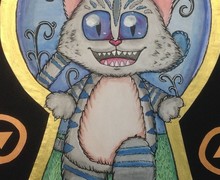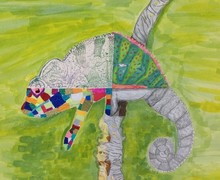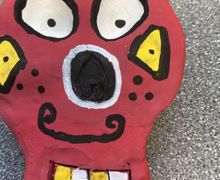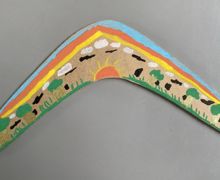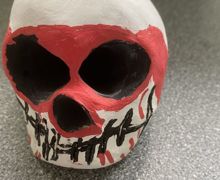- Home
- Curriculum
- Subject Information
- Art
Art
Art Curriculum
Art at The Abbey School equips the students with skills to express themselves creatively. To give them knowledge and understanding of how the arts shape our everyday lives and the confidence to develop their own style through self-expression.
The formal elements of shape, form, pattern, tone, colour, line and texture, are embedded within the curriculum. This allows all students to grow in confidence when evaluating their own work and the work of others. The formal elements also provide a framework where skills can be recapped and built upon.
All topics are ambitious and allow students to explore and engage with a range of different art media and disciplines. In exciting and varied topics that challenge and build on skills previously learned. Transparent assessment allows students to push themselves and reach their full potential. In all years, students are encouraged to reflect on the work of historical and contemporary artists, designers and cultures to inform their own designs.
Supporting Reading
Story books are an important part of the Art curriculum as they help to introduce key words and topics through stories and illustrations. This is normally through films where the story is read aloud accompanied by the images and words on each page. This approach enriches the topic and brings them to life for the students. We also research the illustrator and use their illustrations to inspire our own work, looking at their individual styles and media used.
Subject literacy is taught in Art through key words identified and introduced at the start of topics and revisited regularly throughout the topic to give context to these words. Specific key words are highlighted in green to give focus in each lesson. Widgit symbols are used in addition to text to support comprehension for students when introducing lessons. In addition to this, lessons are also always introduced with a demonstration and visual examples of what is expected during that lesson. In Art, the ‘incidental teaching’ of phonics using Abbey Phonics supports both decoding and encoding. Scripts are used to give a consistent approach across the school.
Year 7 Overview
|
Autumn 1 |
Autumn 2 |
Spring 1 |
Spring 2 |
Summer 1 |
Summer 2 |
|
Elements of Art (Line) |
Elements of Art (Colour) |
Elements of Art (Shape and Texture) |
Elements of Art (Form) |
Elements of Art (Pattern) |
Elements of Art (Value) |
Year 8 & 9 Overview
Cycle 1
|
Autumn 1 |
Autumn 2 |
Spring 1 |
Spring 2 |
Summer 1 |
Summer 2 |
|
Portraits |
Portraits |
Food |
Food |
Still Life |
Still Life |
Cycle 2
|
Autumn 1 |
Autumn 2 |
Spring 1 |
Spring 2 |
Summer 1 |
Summer 2 |
|
Cityscape |
Cityscape |
Pop Art |
Pop Art |
Portraits |
Portraits |
Year 10 & 11 Overview
Cycle 1/ Year 10
|
Autumn 1 |
Autumn 2 |
Spring 1 |
Spring 2 |
Summer 1 |
Summer 2 |
|
Course work |
Course work |
Course work |
Course work |
Course work |
Course work |
Cycle 2/ Year 11
|
Autumn 1 |
Autumn 2 |
Spring 1 |
Spring 2 |
Summer 1 |
Summer 2 |
|
Course work |
Course work |
Exam question course work |
Exam question course work |
Exam question course work and exam |
Assessment
Students are taught and encouraged to self-evaluate and identify their own areas for improvement. While also receiving constant verbal and written feedback according to the school’s ‘star and a wish’ marking scheme, which involves highlighting something they have done well and an area in which they could work on.
Enrichment opportunities
In the last few years students' work has been selected to represent the school in a gallery in the Farnham train station’s waiting room.
Students have had the opportunity to enter the Farnham Lions competition which gave them the experience of working towards a brief and interpreting it in a creative and personal way.

